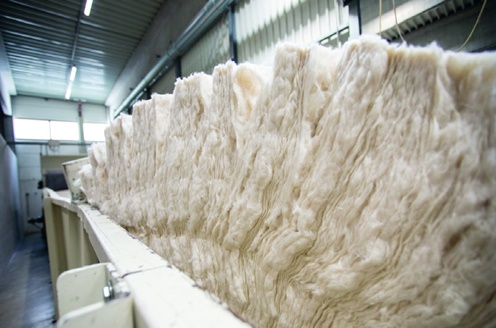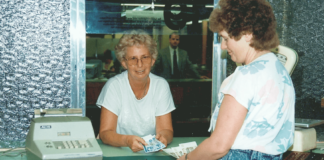
The ecological footprint of banknotes depends on many factors. Stringent product requirements to ensure security, durability, functionality and design limit the scope for sustainability concerns. Louisenthal, a subsidiary of the Giesecke+Devrient Currency Technology Group, has analyzed the production of banknotes with regard to sustainability and launched an information campaign to raise awareness. This campaign also aims to assist central banks and banknote printing plants in their efforts to improve the sustainability of banknotes.
The Ecological Footprint of a Banknote
Eco-friendly and “fair trade” produced raw materials, resource-conserving production processes, reusable packing and intelligent recycling are key considerations to obtain a sustainable product. What about the ecological footprint of a banknote over its lifecycle? Louisenthal paper mill has now examined this question. For the recently launched sustainability campaign headed “Life of a Banknote”, the international specialist of banknote paper and security foils has looked at the individual steps in the value chain and analyzed them from the viewpoint of sustainability. The campaign outlines the areas where sustainability already plays a role and the steps planned to improve the lifecycle and thus the ecological footprint over the lifespan of a banknote. The campaign focuses on the following four key aspects: raw materials, production (energy, water, site), transport (packing, logistics), as well as disposal and recycling.
Sustainability with Regard to Raw Materials
Banknote substrate is essentially made of cotton. For their product, Louisenthal uses almost entirely a waste product of the textile industry: short cotton fiber, also known as “cotton combings.” Even though the raw material accounts for a mere 0.372 percent of the worldwide trade in raw cotton and the market structure with regard to purchasing is very complex, Louisenthal plans to use more “fair trade” produced and eco-certified cotton in future.
Resource Conservation in Production Is a MUST
It is impossible to produce banknote substrate and security laminating film without electricity, heat and water. Yet there are many ways to save on resources. In recent years Louisenthal has already invested EUR 15 million in a more resource-friendly production process. The paper mill in Gmund am Tegernsee, for example, now produces almost 25 percent of their electricity requirements on site and in a carbon-neutral manner: three water turbines and combined heat and power generation in the boiler house supply on average 10 gigawatt hours per year.
In addition, Louisenthal has reduced the demand for water by 40 percent compared to 2010 by using their own wastewater treatment facility.
No “Greenwashing”, just Straight, Transparent Facts
“How clean do we want our money to be? Does money need a new moral? Should we go for ‘green’ money? By addressing these key questions, we are embarking on a challenging yet transparent communication strategy to discuss the issue of sustainability in paper and laminating film production in all honesty and on an equal footing,” explains Clemens Berger, Chairman of the Management Board at Louisenthal. “We don’t seek to ‘greenwash’ our company, we want to make a realistic assessment: Which measures are working well already? Where can we improve? We want our banknotes to be made from environmentally responsible raw materials as far as possible and to be produced, distributed, processed and disposed of in an environmentally friendly manner where possible.”
Louisenthal has presented the relevant facts in a newspaper available online. “We are providing our clients with a compact set of information material which they can use for their own public communications,” adds Berger.
More information on the campaign “The life of a banknote” is available here.
For more information about Giesecke+Devrient, visit their website or YouTube channel.
Did you know that banknotes were partly made of old jeans? CoinsWeekly explains why.
… and elaborates on the debate around polymer money.



